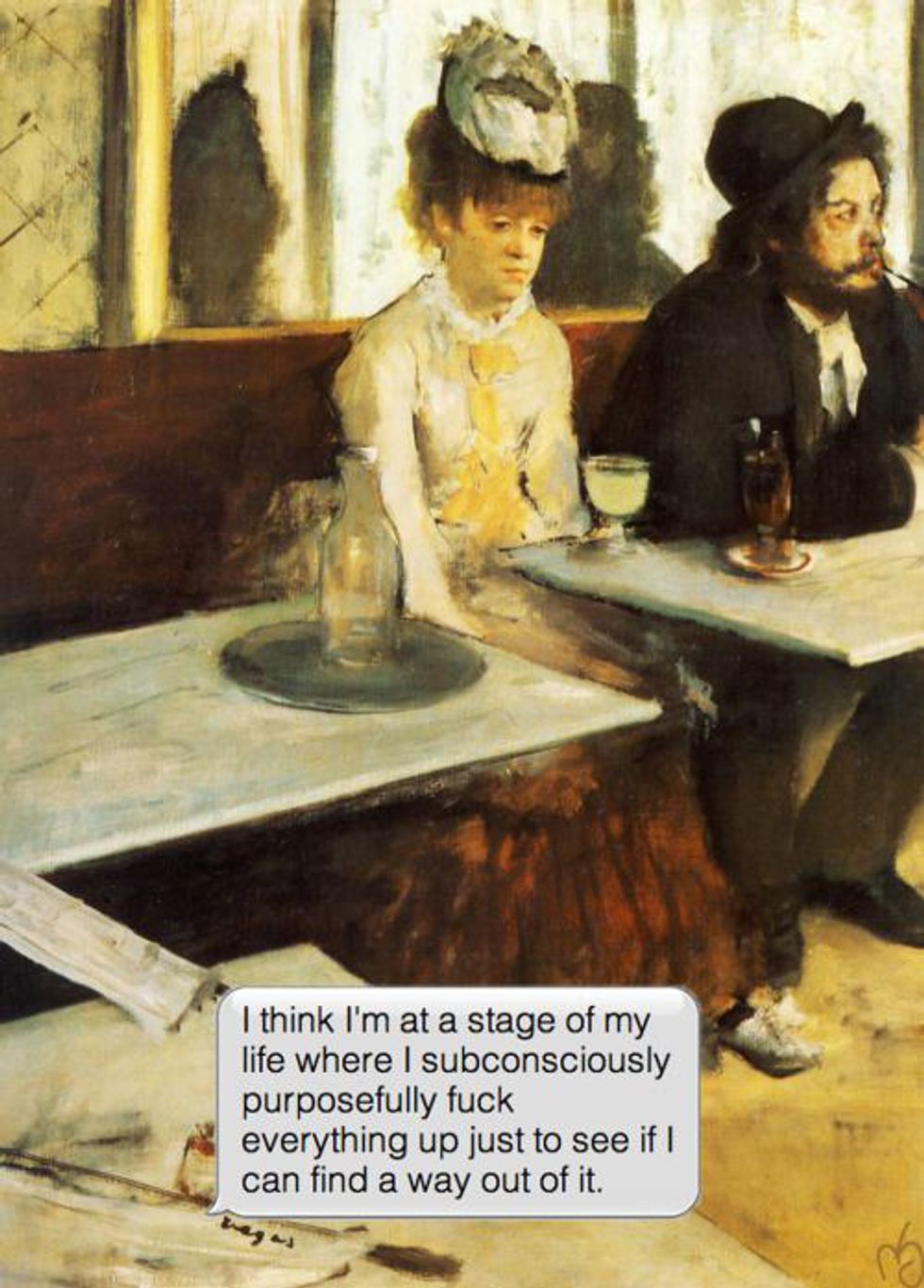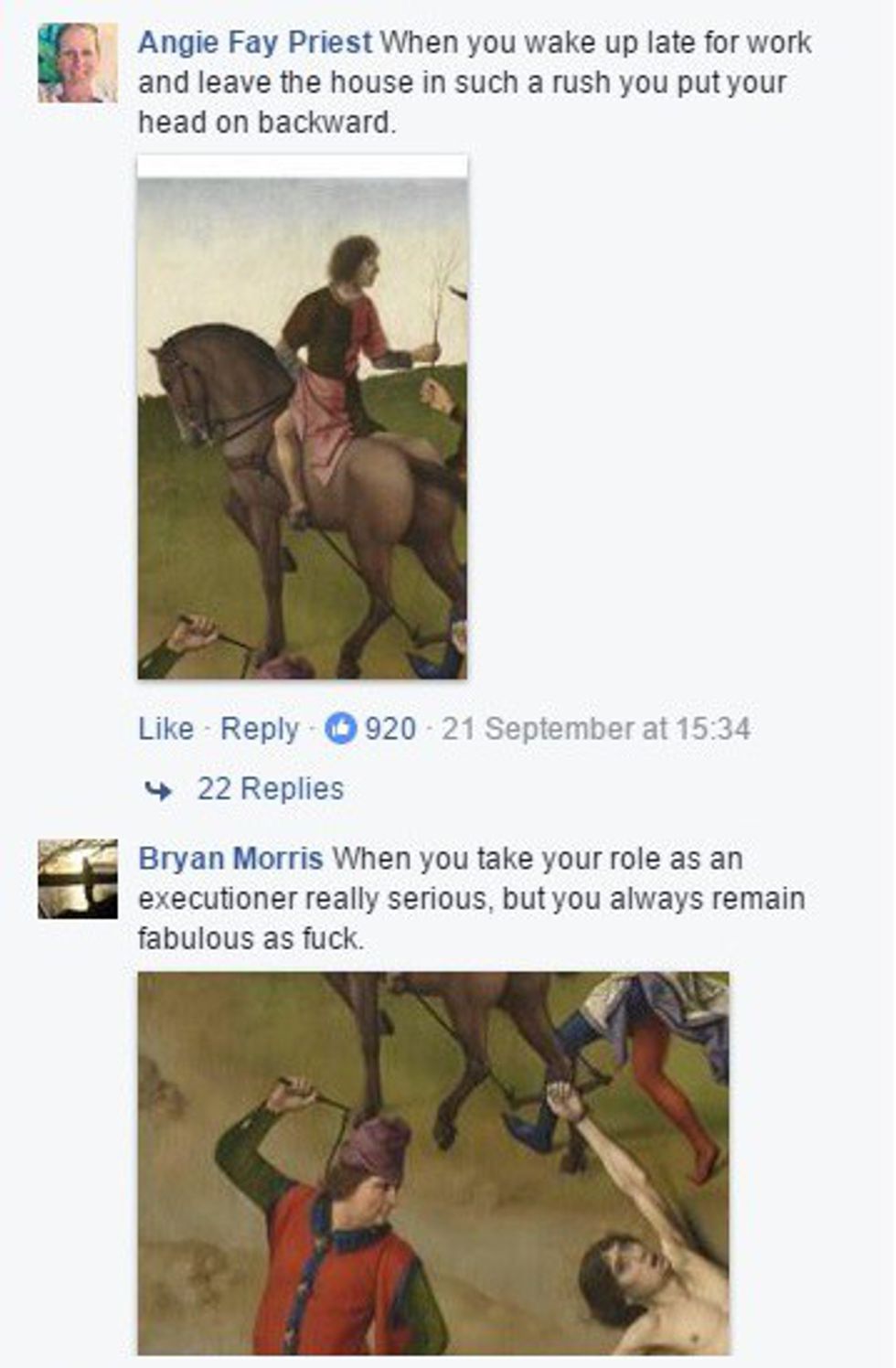Edgar Degas once said that art is not what you see but what you make others see. While many may say that art has become obsolete in today's digital age, even randos on the web practice Degas' idea in the one way they can--by creating memes.
Easy to make, share, and an easy laugh, memes are a staple of the internet and are even reimagining interpretations of classical art. One facebook page aptly named Classical Art Memes has shouldered the responsibility of bringing classical art to social media by transforming striking scenes of battle, religious devotion, and royal courtship into memes. I wonder if Degas had ever imagined his art being satirized into a joke only millennials could understand.
As incongruous as the two might seem, memes pique Gen Y's interest in centuries-old artworks by injecting twentieth-century nihilism into the often fictional lives and worlds of the artists' subjects. Only in a meme can Da Vinci's Mona Lisa chew Juicy Fruit, throw up a peace sign, and get a lap dance from a thong-clad stranger. But more important than the anachronism of art memes is its resulting critique of life's and art's absurdity.
Mirroring the existential crises of its subjects and capturing their agony and exaggerated beauty as everyday banalities, art memes mock the theatrical by mimicking it. In one meme, the torturous death of Saint Hippolytus is rebranded as a feeling of confusion at being invited out by different friends on the same night. Beautifully rendered in paint by Hugo Van Der Goes and Dieric Bouts, Hippolytus' literal state of being ripped apart is interpreted as our metaphorical feeling of conflict--despite how trivial it may be.
But art memes satirize not only the pained faces of martyrs and bored women but also our own modern trifles. Like the one of the "Triptych of St Hippolyte", these memes exaggerate modern feelings of hopelessness and desperation by depicting them as literal torture. Meme creators have even managed to expose a hidden cynicism in seemingly lighthearted pieces.
Surprisingly, Classical Art Memes' followers are rarely, if ever, offended by the admins' dark and often scalding humor. They have instead created a new tradition of commenting with their own memes by cropping the painting and offering their interpretations of what it might mean. This exchange, not unlike conversations had among critics, is slowly redefining art's accessibility.
Like the rise of a middle-class art audience in Victorian England, Classical Art Memes' creators and lovers are shattering the myth of who should consume art. Art lovers are no longer just the spectacled critics but, because of memes' growing popularity, now include keyboard wielding satirists. I don't know what Degas would say about this. But I for one welcome this refreshingly new take on how we interpret art.
Become a patron of the arts here.














































